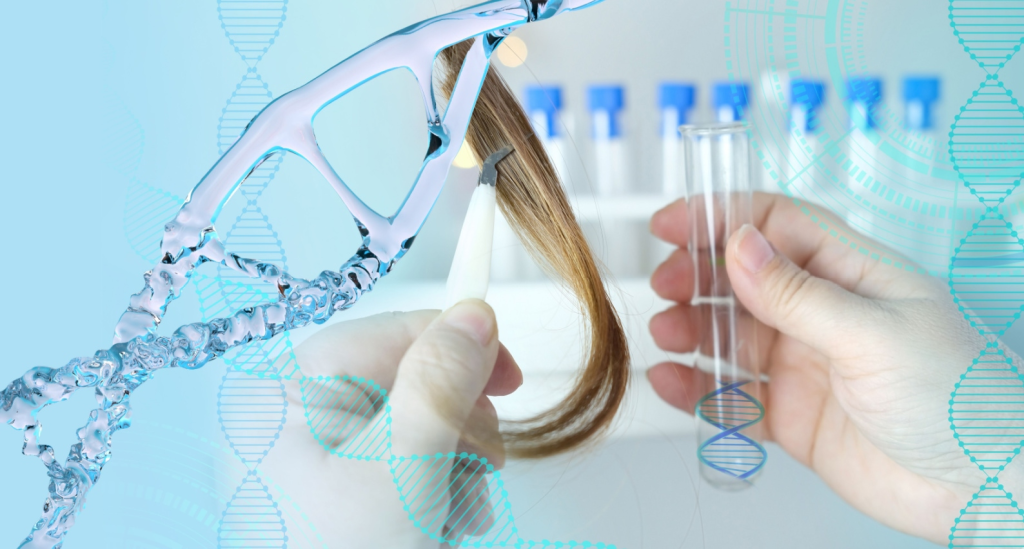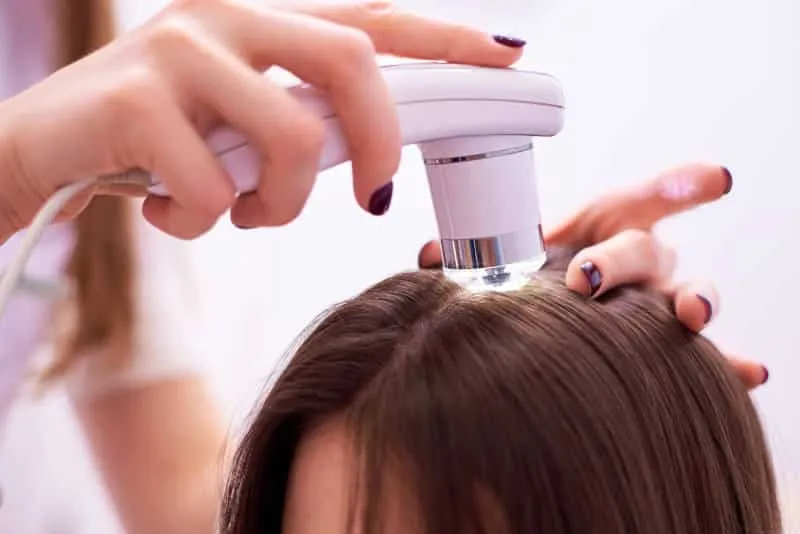Hair loss is a universal concern that affects millions of people worldwide, transcending gender, age, and ethnicity. While often associated with aging, hair loss can occur for numerous reasons at any stage of life. Understanding the common causes of hair loss is the first step toward addressing it effectively, whether through prevention, treatment, or acceptance. This comprehensive guide examines the science behind hair loss, exploring the various factors that contribute to this often emotionally challenging condition.
The Hair Growth Cycle Explained
Before delving into causes of hair loss, it’s essential to understand the natural cycle of hair growth that occurs on the human scalp.
Phases of Hair Growth
The hair growth cycle consists of three distinct phases:
- Anagen (Growth Phase): This active growth phase typically lasts 2-7 years. During this time, cells in the hair root divide rapidly, adding to the hair shaft. Approximately 85-90% of scalp hairs are in this phase at any given time.
- Catagen (Transition Phase): A brief transitional period lasting about 2-3 weeks where growth stops, and the hair follicle shrinks.
- Telogen (Resting Phase): A 2-4 month resting period where the follicle remains dormant. At the end of this phase, the hair is shed, and the cycle begins anew.
Normal Hair Shedding
It’s perfectly normal to lose 50-100 hairs daily as part of this natural cycle. Hair loss becomes a concern when this balance is disrupted—when shedding exceeds new growth or when the quality of new hair deteriorates significantly.

Common Types of Hair Loss
Hair loss manifests in various patterns and progressions, each often associated with specific causes.
Androgenetic Alopecia (Pattern Hair Loss)
The most common form of hair loss, affecting both men and women:
Male Pattern Baldness:
- Typically begins with a receding hairline and thinning at the crown
- Follows a predictable progression (often mapped on the Norwood scale)
- Can start as early as the late teens or twenties
- By age 50, affects more than 50% of men to some degree
Female Pattern Hair Loss:
- Usually presents as overall thinning, particularly at the crown
- Rarely causes complete baldness
- Often becomes noticeable after menopause
- Affects approximately 40% of women by age 50
Alopecia Areata
An autoimmune condition where the body’s immune system mistakenly attacks hair follicles:
- Characterized by sudden, patchy hair loss
- Can affect any hair-bearing area of the body
- May resolve spontaneously or progress to complete scalp hair loss (alopecia totalis) or total body hair loss (alopecia universalis)
- Affects approximately 2% of the population at some point in life
Telogen Effluvium
A temporary form of hair loss caused by a disruption in the normal hair cycle:
- Results in excessive shedding throughout the scalp
- Often triggered by significant physical or emotional stress
- Typically occurs 2-3 months after the triggering event
- Usually resolves when the underlying cause is addressed
Traction Alopecia
Gradual hair loss resulting from prolonged tension on hair roots:
- Commonly caused by tight hairstyles like ponytails, braids, or extensions
- Initially affects hairline and areas under the most tension
- Can become permanent if the damaging hairstyles continue long-term
- Predominantly affects women and those who regularly wear tight hairstyles

Medical Conditions That Cause Hair Loss
Various health conditions can disrupt the hair growth cycle and lead to increased shedding or reduced growth.
Hormonal Disorders
Imbalances in hormone levels significantly impact hair growth:
Thyroid Disorders:
- Both hypothyroidism and hyperthyroidism can cause diffuse hair thinning
- Often improves when thyroid function normalizes
- Affects hair texture and quality before visible loss occurs
Polycystic Ovary Syndrome (PCOS):
- Excess androgens can lead to male-pattern hair loss in women
- Often accompanied by other symptoms like irregular periods and excess facial/body hair
- Affects up to 10% of women of childbearing age
According to comprehensive alopecia research conducted by dermatology experts, hormonal factors play a crucial role in many forms of hair loss, particularly those affecting women during significant life transitions such as pregnancy and menopause.
Nutritional Deficiencies
The hair follicle requires adequate nutrition to maintain healthy growth:
Iron Deficiency:
- One of the most common nutritional causes of hair loss
- Particularly affects women with heavy menstrual periods
- May cause telogen effluvium or exacerbate other hair loss types
Protein Malnutrition:
- Severe protein deficiency can force hair follicles into the resting phase
- May occur with extreme dieting, eating disorders, or malabsorption disorders
- Results in brittle hair that breaks easily
Vitamin Deficiencies:
- Low levels of B vitamins (particularly biotin) can affect hair health
- Vitamin D deficiency has been linked to alopecia areata
- Zinc deficiency may contribute to telogen effluvium and brittle hair
Scalp Infections
Various infections can affect the scalp and hair follicles:
Fungal Infections:
- Tinea capitis (scalp ringworm) causes patchy hair loss with inflammation
- More common in children but can affect adults
- Results in circular patches of hair loss with broken hairs
Bacterial Infections:
- Folliculitis can progress to cause permanent damage to hair follicles
- Often presents with pustules or crusting
- May require antibiotic treatment to resolve
Autoimmune Conditions
Beyond alopecia areata, other autoimmune disorders can contribute to hair loss:
Lupus:
- Can cause “lupus hair” (thin, brittle hair) and areas of scarring alopecia
- Hair loss often affects the frontal scalp with recession of the hairline
- May flare with disease activity and improve during remission
Scleroderma:
- Can cause diffuse or patchy hair loss due to skin changes
- Often accompanied by shiny, tight skin
- Typically permanent due to scarring

Lifestyle and Environmental Factors
Daily habits and environmental exposures can significantly impact hair health.
Stress and Psychological Factors
Mental and emotional wellbeing directly affects hair growth:
Chronic Stress:
- Elevates cortisol levels, which can push hair follicles into the telogen phase
- May trigger or worsen alopecia areata
- Creates a cycle where hair loss causes more stress, potentially worsening the condition
Trichotillomania:
- Compulsive hair-pulling disorder classified as a body-focused repetitive behavior
- Creates patchy hair loss with broken hairs of different lengths
- Often triggered by stress, anxiety, or as a self-soothing behavior
Chemical Treatments and Heat Styling
Modern hair styling practices can damage hair and follicles:
Chemical Processing:
- Frequent coloring, perming, or straightening damages hair structure
- Can cause hair breakage that resembles thinning
- May trigger inflammation of the scalp and follicles
Heat Styling:
- Regular use of high-heat tools damages the hair shaft
- Repeated damage leads to breakage and apparent thinning
- Can exacerbate existing hair loss conditions
Diet and Nutrition
Eating patterns directly impact hair health:
Crash Dieting:
- Sudden weight loss (losing more than 15 pounds) can trigger telogen effluvium
- Restrictive diets often lack nutrients essential for hair growth
- Effects typically appear 3-6 months after the diet begins
Malabsorption:
- Conditions like celiac disease can prevent absorption of nutrients vital for hair growth
- Often accompanied by other symptoms of nutritional deficiency
- May improve with proper diagnosis and dietary management
Medication-Induced Hair Loss
Many common medications list hair loss as a potential side effect.
Common Medications That Cause Hair Loss
Chemotherapy Drugs:
- Designed to target rapidly dividing cells, including hair follicles
- Usually causes complete but temporary hair loss
- Hair typically regrows after treatment concludes, sometimes with changes in texture or color
Anticoagulants:
- Blood thinners like heparin and warfarin may cause telogen effluvium
- Usually resolves when medication is discontinued or dosage adjusted
Antidepressants:
- Certain SSRIs and other psychiatric medications can cause hair thinning
- Often dose-dependent and reversible
Retinoids:
- High doses of vitamin A derivatives can trigger hair loss
- Usually improves after discontinuation
Blood Pressure Medications:
- Beta-blockers and ACE inhibitors may cause telogen effluvium
- Alternative medications may cause less hair loss
Age-Related Hair Changes
Natural aging processes affect hair in predictable ways.
The Aging Hair Follicle
As we age, hair follicles undergo several changes:
- Decreased size and vigor of the follicle
- Shortened anagen phase, resulting in shorter maximum hair length
- Reduced melanin production, causing graying
- Decreased density of follicles per square inch
- Changes in hair diameter and texture
Menopause and Hair Loss
The hormonal changes during menopause significantly impact hair:
- Decreased estrogen levels remove the protective effect against androgens
- Increased relative influence of testosterone on follicles
- Often results in overall thinning rather than complete baldness
- May be accompanied by changes in hair texture and manageability
Modern Diagnostic Approaches
Properly diagnosing the cause of hair loss requires a methodical approach.
Clinical Evaluation
Dermatologists use several techniques to diagnose hair loss:
Medical History:
- Timeline of hair loss onset and progression
- Family history of hair disorders
- Medical conditions and medication use
- Recent life events and stressors
Physical Examination:
- Pattern and distribution of hair loss
- Presence of inflammation or scaling
- Hair pull test to assess active shedding
- Examination of hair shafts for structural abnormalities
Advanced Diagnostic Tools
For complex cases, specialized testing may be employed:
Trichoscopy:
- Dermoscopy of the scalp to visualize follicular openings and hair shafts
- Can identify characteristic patterns of specific hair disorders
- Non-invasive and increasingly used as a standard diagnostic tool
Scalp Biopsy:
- Removal of a small piece of scalp tissue for microscopic examination
- Can definitively diagnose many forms of hair loss
- Particularly useful for scarring alopecias
Blood Testing:
- Hormonal panels to detect imbalances
- Nutritional assessments for deficiencies
- Autoimmune markers for conditions like lupus or thyroid disease
Genetic Components of Hair Loss
Hair loss often runs in families, highlighting the strong genetic influence on hair health.
Hereditary Factors
The genetic basis of hair loss is complex:
Polygenic Inheritance:
- Pattern hair loss is influenced by multiple genes
- Inherited from both maternal and paternal lines
- The myth that baldness only comes from the maternal grandfather is incorrect
Androgen Receptor Gene:
- Located on the X chromosome
- Variations influence sensitivity of hair follicles to DHT
- A key factor in male pattern baldness
Other Genetic Factors:
- Genes controlling age of onset
- Genes determining the pattern of loss
- Genes affecting response to treatments
Current hair health insights from researchers at prominent institutions have identified over 200 genetic regions that may contribute to pattern hair loss, demonstrating its complex polygenetic nature.
Psychological Impact of Hair Loss
The emotional effects of hair loss should not be underestimated.
Emotional and Social Effects
Hair loss can profoundly affect mental wellbeing:
- Decreased self-esteem and body image
- Social anxiety and avoidance behaviors
- Depression and distress
- Impacts on personal and professional relationships
- Effects on perceived attractiveness and sexuality
Coping Strategies
Many people develop effective approaches to manage the emotional impact:
- Support groups (in-person and online)
- Psychological counseling
- Style adaptations and cosmetic solutions
- Gradual acceptance and identity reconstruction
- Advocacy and awareness-raising activities
Conclusion
Hair loss represents a complex interplay of genetic predisposition, hormonal influences, medical conditions, environmental factors, and aging processes. Understanding the specific cause of hair loss is crucial for determining the most appropriate management strategy, whether that involves medical treatment, lifestyle modifications, or cosmetic approaches.
For many, hair loss can be emotionally challenging, affecting self-image and confidence. However, with advances in both diagnostic techniques and treatment options, more solutions are available than ever before. Additionally, growing social acceptance of hair loss as a normal variation in human appearance is helping reduce the stigma associated with this common condition.
If you’re experiencing concerning hair loss, consulting with a dermatologist specializing in hair disorders can provide personalized insights into your specific situation. Remember that early intervention often leads to better outcomes, particularly for progressive forms of hair loss where follicle preservation is possible.

